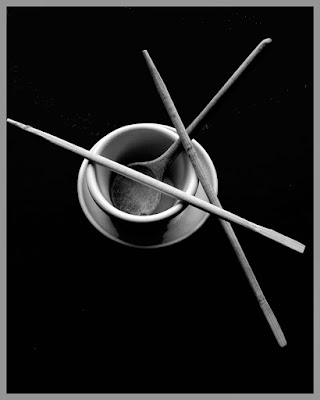The circle pattern seems to be one of the
compositional visual elements least used.
This is probably because the viewer’s interest is quickly disengaged
from the subject unless the circle is broken somehow to stop the eye from
losing interest. In creating my circular images, I’ve decided to break
the circular composition within my images or place objects within the circle to
solve this compositional problem. As
always, simplicity is the key to an effective means of presenting your
subject. Anything with a circle as the
main point of interest is always a challenge.
All of the items from
my kitchen shot in one day using window light.






















































